
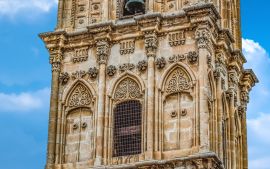
01
St. Lazarus Church & Ecclesiastical Museum Larnaca
Saint Lazarus came to Cyprus after having being resurrected by Jesus Christ. He was ordained as the first Bishop of Kition by the Apostles Barnabas and Paul and lived in the city for thirty years. His tomb is situated under the sanctuary of the church named after him. The saint is so revered that a procession is held in his honour eight days before Easter on Saint Lazarus day. During the procession, the icon of Saint Lazarus is carried through the streets of Larnaka. Next to the church is the Byzantine Museum, where important religious icons, artifacts and relics are exhibited. Built around 900 AD, Saint Lazarus church is one of the most important surviving Byzantine Monuments in the whole of Cyprus. Located in the square named after him, in the town centre, the magnificent stone church of Agios Lazaros is one of the most remarkable examples of Byzantine architecture in Cyprus and is built over the actual tomb of the saint. Built in the 9th century by Byzantine Emperor Leo VI, the church was restored in the 17th century. Although the three domes and original bell tower of the church were destroyed in the first years during Ottoman rule, the gold-covered iconostasis has survived unharmed and is a superb example of baroque woodcarving.
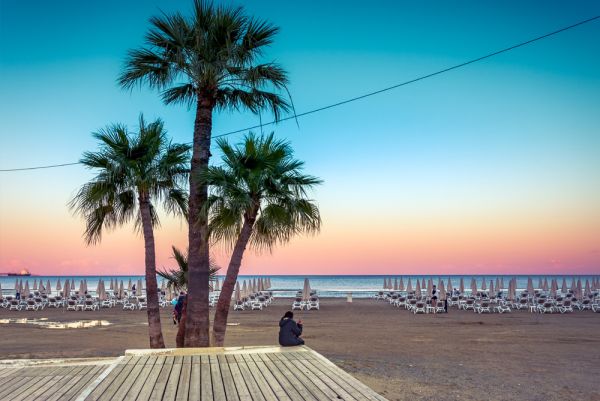
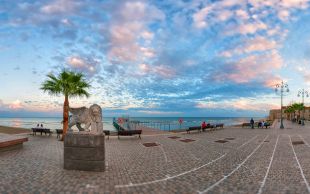
02
Finikoudes (Palm Trees) Promenade
This is the most famous road in Larnaca. It is lined with tall palm trees. Finikoudes Beach is one of the best beaches to be at during the summer. With a tropical environment akin to an oasis, and with a whole range of activities and entertainment available, the day will just fly by. Many restaurants, cafes, shops and well-known food chains line up parallel to the beach which is littered with sunbeds. Carnivals and festivals are common on the main promenade on Finikoudes beach. It is considered one of the most pleasant entertainment seafront areas in the whole of Cyprus. This beautiful avenue along a sandy beach on the popular seafront of the city accommodates great hotels, cafes, pubs, clubs and restaurants of all cuisines. Along this famous sandy beach, which is both buzzing and friendly day and night, whether it’s summer, winter, springtime, or autumn, activities are a non-stop event, as the beach fans and swimmers interact with the tourists visiting the museums, the historic buildings, dining at the restaurants, and who all make merry with the locals. Walks on the promenade are probably the most common activity with many people walking up and down the promenade night and day. Regular boat trips can be taken from the marina which is located at the commencement point of the promenade.
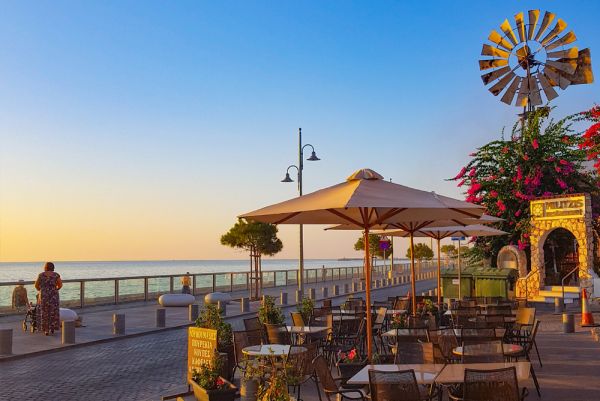

03
Piale Pasha Street
The street named Piale Pasa is an ideal location to enjoy food at one of the traditional or modern restaurants. You can enjoy a walk by the Mediterranean Sea, whilst being surrounded by the Larnaca Medieval Castle on the one hand and the Mackenzie beach on the other. Recently, this beachside strip has been transformed into a street – literally by the sea, into a picturesque and modernly designed walking path. The street is an extension of Athenon Avenue (Finikoudes) and precedes the famous Mackenzie area. It consists of a road for vehicles, as well as specialized routes for bicycles and pedestrians.

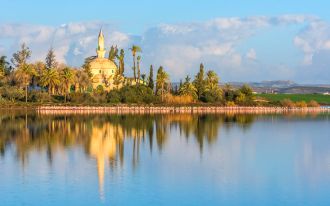
04
Larnaca Salt Lake & Hala Sultan Tekke Mosque
Upon arriving at Larnaca International Airport, the first site of interest you will encounter is the Salt Lake of Larnaca. A magnificent nature place. The total surface area of the Larnaca Salt Lake is 2.2 Km² and it is considered one of the most important wetlands in Cyprus with an array of plants, birds and wildlife. It has a history as a natural habitat of sea life that can be traced as far back as 3 to 5 million years ago. Indeed, fossil life of this age can be found in the surrounding hills. During the prehistoric age the Salt Lake was a gulf. From 17th century B.C. onwards it was a natural port for the prehistoric town next to Hala Sultan Tekke, but was then abandoned by the inhabitants during the 11th century B.C. The natural port became destroyed roughly the same time as when the gulf was closed, and the central Salt Lake was thus formed. Excavations in the region reveal that this could have been one of the first natural ports that facilitated trade between Cyprus and the great civilizations of the area at the time when international seafaring exchanges was just commencing. One of the more important and costly exports of this prehistoric town and of the neighbouring town of Kition that was booming, was porphyry-red dies, made from the juices of murex-shells. These shells were abundant in the gulf and until now in the Larnaca bay, where you can see the water in the salt lake often having a reddish colour. As can be deduced by the lake’s name, salt was another valuable prehistoric product of the lake which was greatly exploited throughout the centuries until recently. Many historians dating back from Before Christ, reported on the great quality of the salt here and the large income it gave from exports. Hala Sultan Tekke: Dated around the 18th century, it is built over a tomb which according to tradition belongs to Umm Haram, foster-mother of the Prophet Mohammed.
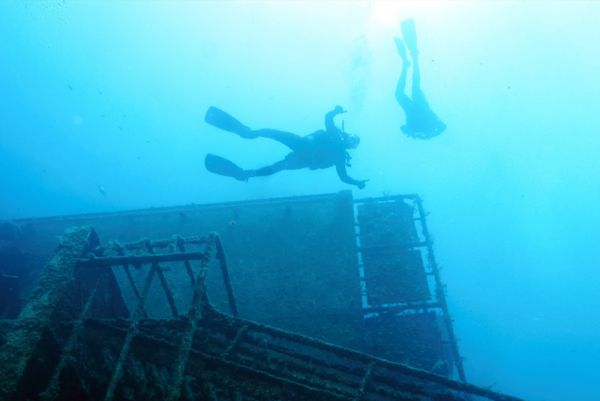
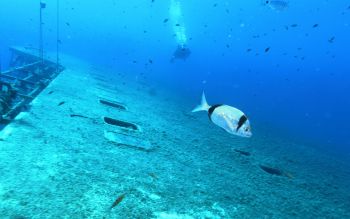
05
Zenobia Wreckn
The Zenobia wreck is an absolute must for all serious divers visiting Cyprus. If you are not a diver but wish to see the Zenobia shipwreck, you can opt for a glass-bottom boat from the Larnaka Marina. The Zenobia was a Swedish roll-on-roll-off ferry which was loaded with 104 trailers and trucks when it sunk on her maiden voyage to Cyprus in June 1980 off Larnaka’s fishing harbour. The Zenobia wreck is now lying on her port side 42 meters deep and 1.5km from the shore. The top part of the wreck is 16m below the water surface. The water visibility is on a normal day up to 50m, with the temperature ranging from 16oC in the winter to 27oC during the summer. The Zenobia has now become a protected artificial reef, with many species of fish having made it their natural habitat, including Sea Bass, Dusky and Striped Groupers, Parrotfish, Amberjacks, Barracuda, a variety of Bream and Wrasse, and many others. In fact, the marine life in and around the wreck is unique, and the dive site is currently rated amongst the top ten wreck dive sites in the world.
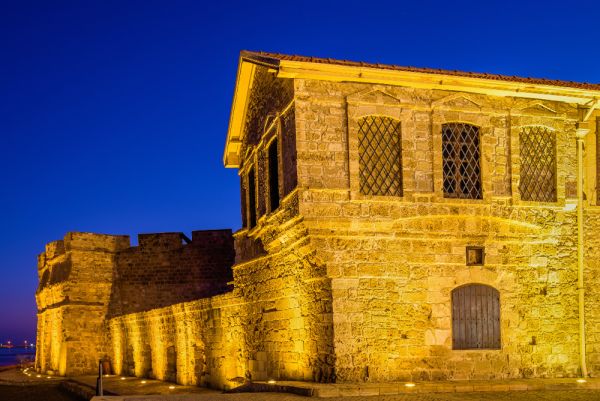

06
Larnaka Medieval Castle
At the end of Athens Avenue, at the ending point of the Palm Tree Promenade and at the starting point of Makenzie Beach road, stands Larnaka Castle. It was built in the 12th century as the first fortification of the Byzantine Era. The first written testimony of the castle is in the 14th century when the chronographer Florius Boustronius dated it to the years of James I, the Luzignian King (1382-1398 A.D.) who built it to protect the harbour. During this period, the Genovese occupied the city of Famagusta. Subsequently, the Luzignians needed to develop another major port for their needs. Sources in the 18th century maintain that the castle was built by the Turks in 1625 A.D., despite the fact that there was a Turkish garrison stationed there since 1570 A.D. Until 1948, during the British colonial years, the English used the castle as a prison and for the execution of convicts.
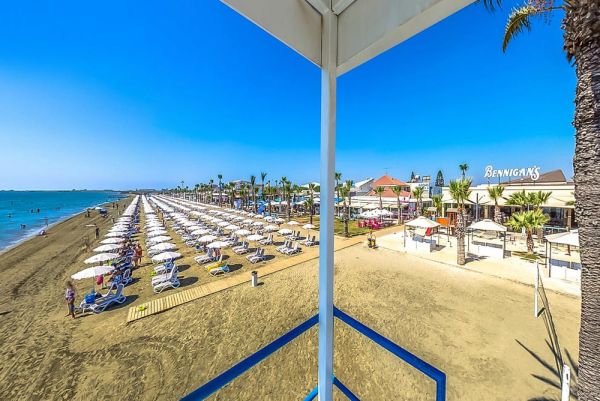
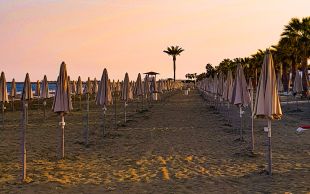
07
Mckenzie Beach (Bars – Pubs – Cafes & Restaurants)
Awarded with the Blue Flag, this beach lies beside Larnaca International Airport. Lay down on the fine grey sand or bathe in the water and watch the planes close up as they come in to land at the airport. The sea is calm and many people walk parallel along the water’s edge. There are very good facilities here; toilets, changing-rooms and many others. Lifeguards are on constant duty during the summer months. Water sports are on offer including windsurfing. Mackenzie beach is also a lovely place to dine with a continuous array of restaurants lining parallel and on the beach offering a lovely view of the Mediterranean Sea whilst drinking and dining. Access to Mackezie Beach is very easy with much parking space behind the restaurants. There is a lot of nightlife to discover in Mackenzie beach (especially on Summer). Have a quiet coffee or cocktail by the pleasant beachfront or dance the night away in some of the buzzing bars and clubs.
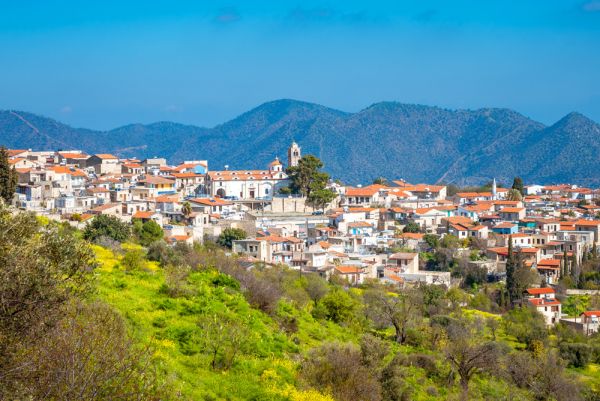
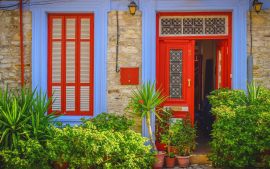
08
Agrotourism in Larnaca Villages ( Lefkara-Tochni-Vavla-Kato Drys-Skarinou-Kalavasos)
Away from the tourist areas, the Larnaca countryside has a diverse wealth of its own with traditional villages, narrow streets tiny churches, remote monasteries and scenic views. The villages surrounding Larnaca town are endowed with historical, natural and cultural riches. These traditional settings enhance and complement a wonderful natural environment, with local character and traditional architecture. Within this environment you can experience the traditions of the village people: the simple, serene rhythms of rural life, folk customs, daily activities and the authentic tastes of traditional cuisine; all filtered through the sense of genuine hospitality.
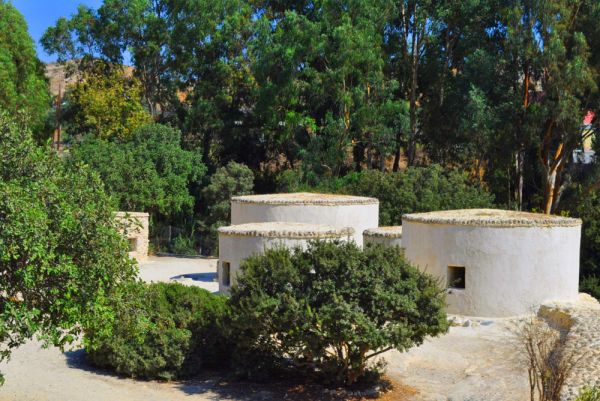
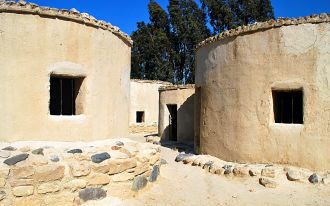
09
Choirokoitia Neolithic Settlement (UNESCO)
Part of the UNESCO World Cultural Heritage List, this wonderful Neolithic settlement was discovered well preserved. The site depicts the Neolithic period in Cyprus, offering insight on the Neolithic culture in the area. This site contains 5 dwellings that have been reconstructed based on the Neolithic construction mould. In the reconstruction, the same methods of construction and materials were used together with the very objects found in the houses during the excavations for the furnishings. This was done to ensure a real and accurate impression of the village as it was then, all those years ago.
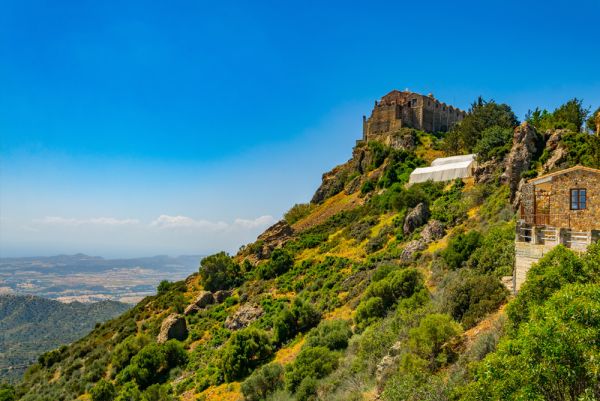
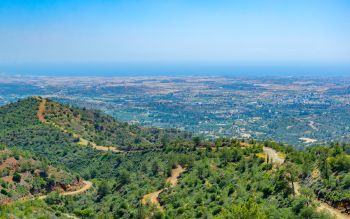
10
Stavrovouni Monastery
Sitting on top of a mountain peak, Stavrovouni Monastery, dedicated to the Holy Cross, was founded in 330 A.D. by Saint Helen, the mother of St. Constantine the Great. She brought with her from her travels to the Holy Land a piece of the Holy Cross with which the Monastery derives its name. People can come to venerate it as it is enshrouded in a large silver Cross. From the Monastery, due to its position, one may view the surrounding area including Larnaca bay. The monastic brotherhood is exceptionally devout, keeping strict vows akin to those of Mount Athos in Greece. Women are not allowed in the Monastery; although one of the monks comes down some days to confess them. Men may visit the Monastery daily from dawn till dusk, except between the hours of 12 pm – 1.pm (3 pm in the summer). The Monastery of Agia Varvara (Saint Barbara) lies at the base of the mountain and the monks there have are renowned icon painters with their reputation for iconography held in high esteem all over Cyprus.
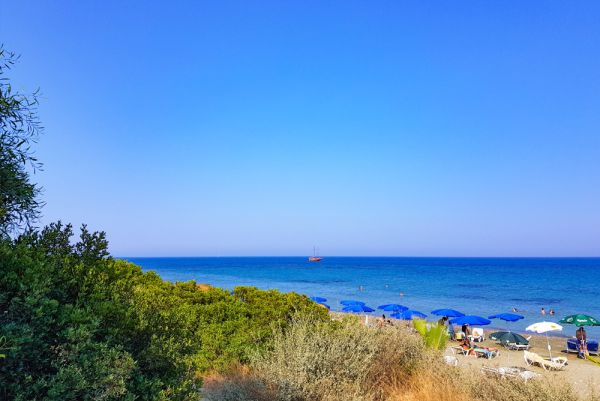
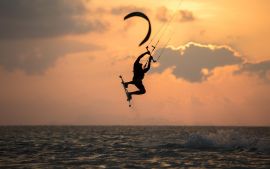
11
Kitesurfing in Kiti Softades Beach & Pervolia Beach
Pervolia Beach is a famous destination for sports fans, usually getting quite crowded during weekends. Pervolia Beach is located very close to the main city and is a hot spot for kite-surfing enthusiasts of all levels. Although the beach is not particularly sandy, it is 10 km long with shallow waters, few swimmers, and constant winds from dawn till dusk. The crystal clear water and the shore break the waves. The strong thermal winds usually originate from the south, southwest which create the perfect conditions for freestyle, long distance and bump and jump kite-surfing. For those who want to improve their skills there are schools available on the spot lessons and practice. Heading inland away from the beach, there are open fields and many kite-surfers use them as launching and landing sites for their kites.
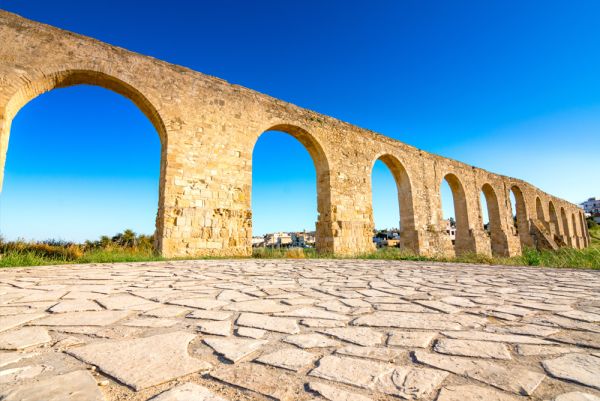
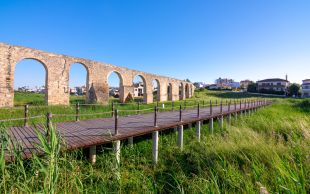
12
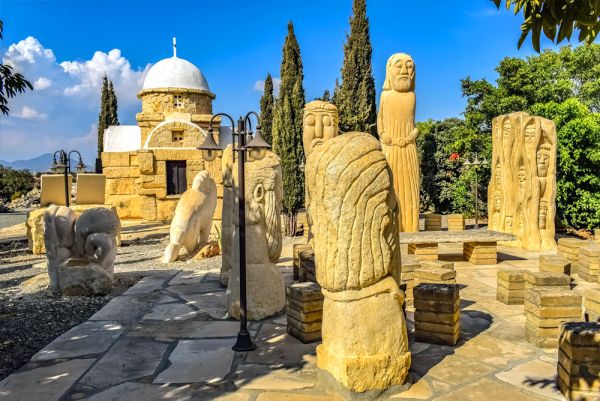
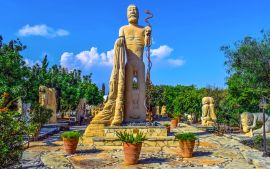
13
Sculpture Park
Petreon Sculpture Park
The name of the park comes from the Greek word “petra” (stone) and refers to the material used for all the artworks. It is a splendid park, a place for everybody; for people looking for a quiet time, for peace, a place to meditate, to learn how stone can be sculptured in the right hands, for schools to learn the history of each art piece and for children to discover. You can also to sit in beautiful and idyllic areas in the shade to draw, to paint, to sculpt together with the craft masters. Petreon open air park in Mazotos village is a privately owned park, and is open to the public by appointment. We invite you all to discover the uniqueness of the Sculpture Park Petreon and its craft master – Mr. Savva.
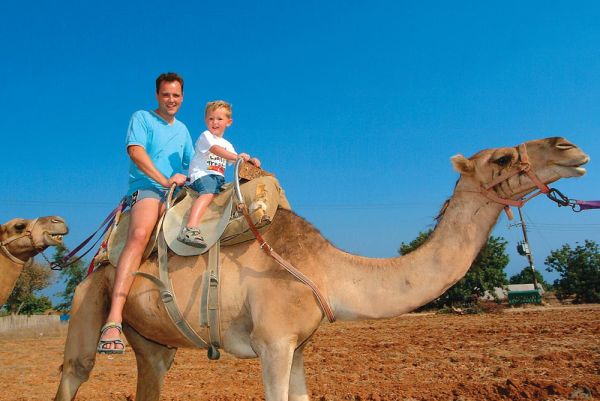
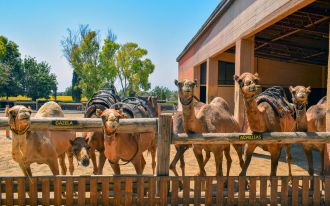
14
Camel Park
The Camel Park is a place where you can see animals that live there such as ostriches, lamas, goats, deer, ponies, kangaroos, turtles, fish, a variety of birds, and much more. The Camel Park which is situated in Mazotos is only 15 minutes from Larnaca Airport and is conveniently located between Larnaca, Nicosia, and Limassol. As you enter into the Park, you will appreciate that this is indeed a great day out for the whole family. There are play areas for the children, games, and many other fun activities to enjoy.
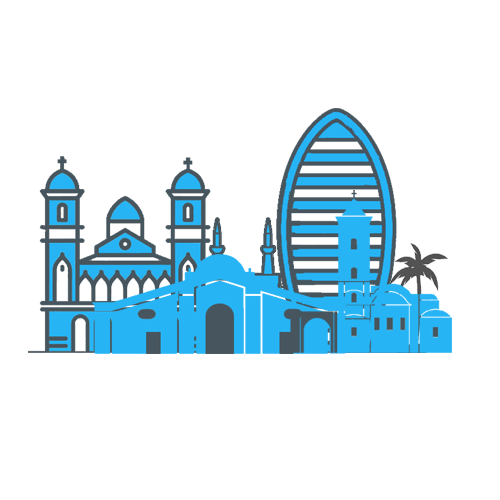 Cities/District
Cities/District Monasteries
Monasteries Unesco Churches
Unesco Churches Food & Drink
Food & Drink  Limassol to Nicosia
Limassol to Nicosia Famagusta to Machairas
Famagusta to Machairas Kourion to West Akamas
Kourion to West Akamas Hotels
Hotels Villas
Villas Agrotourism Accommodations
Agrotourism Accommodations Flights
Flights Rent a Car
Rent a Car